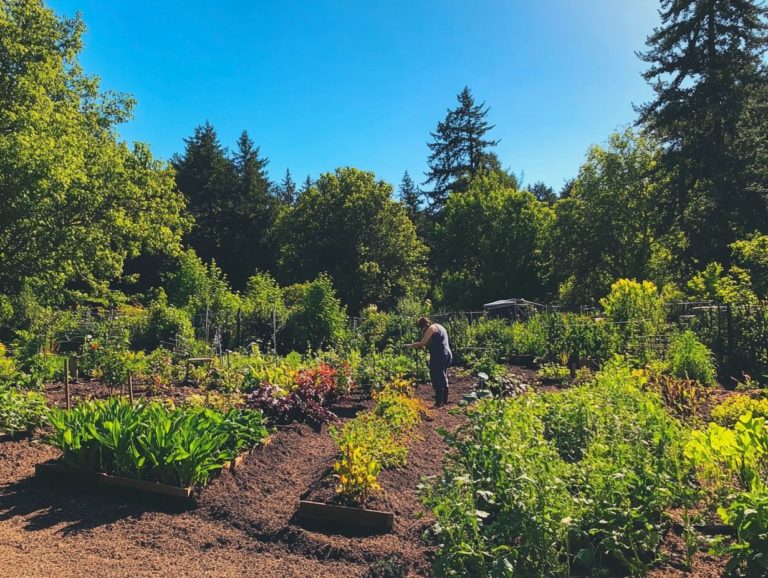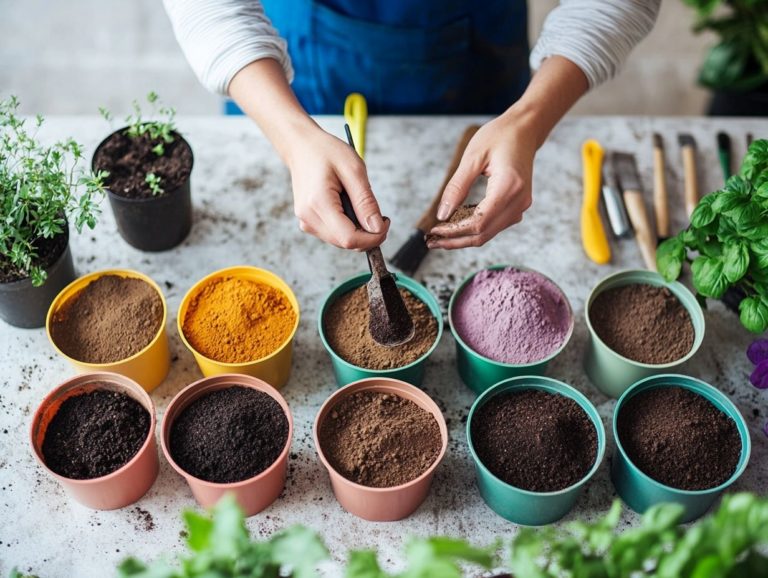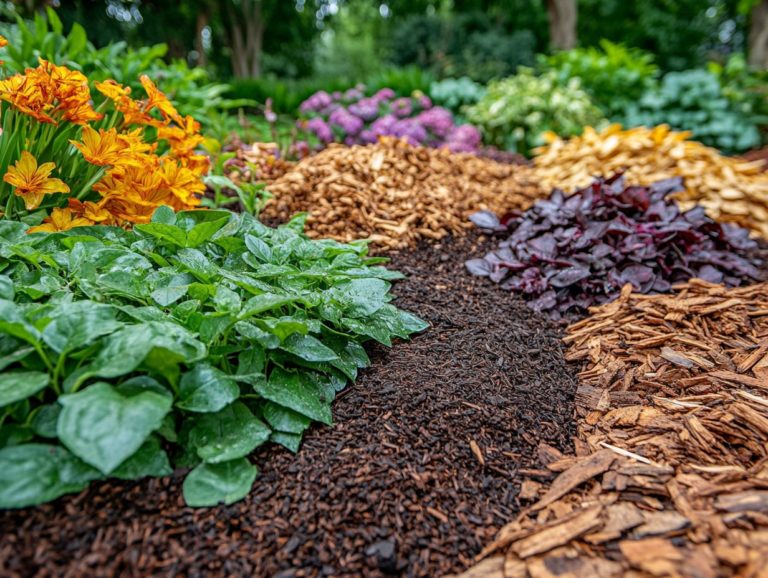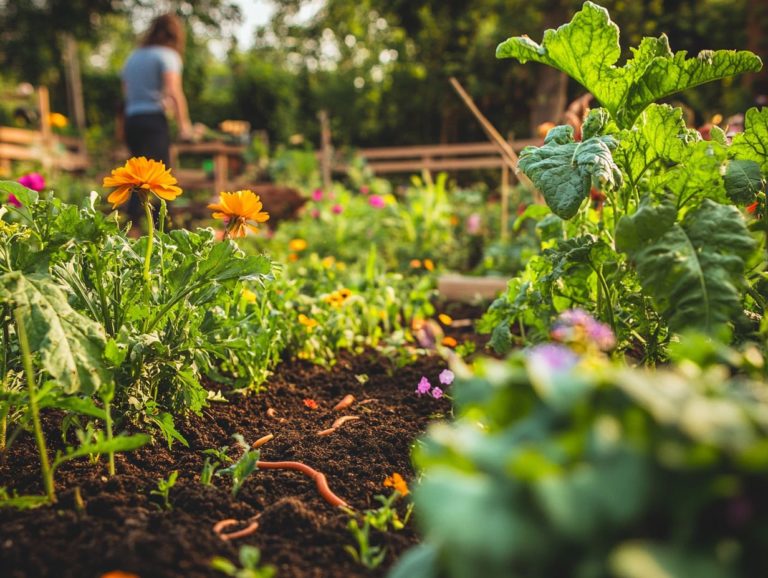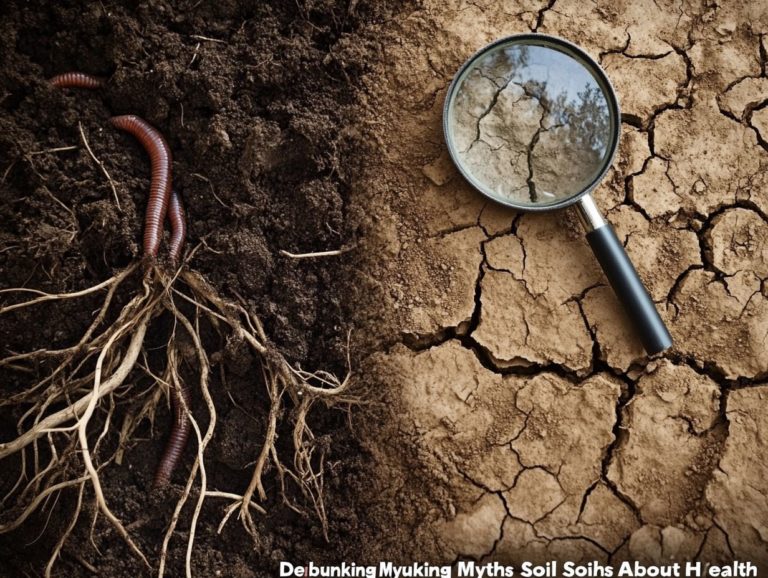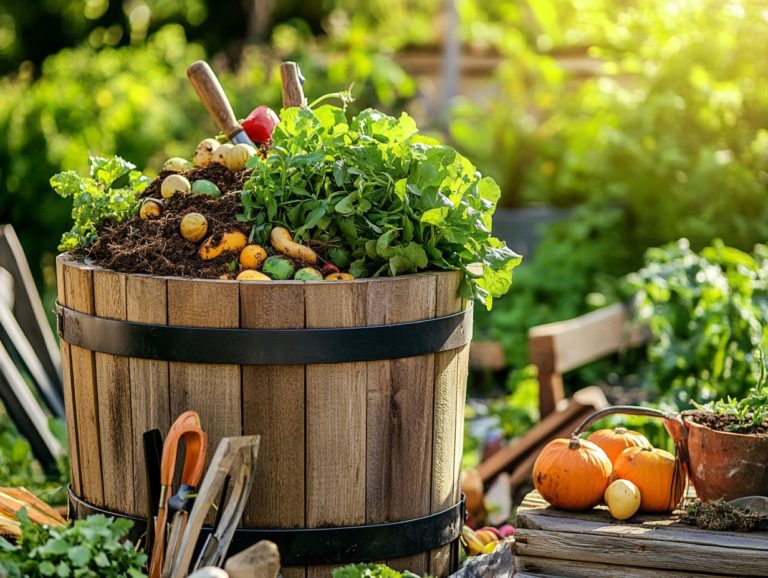The Connection Between Soil and Plant Health
Soil often goes unnoticed. Yet, it holds a vital role in the health and vitality of your plants.
Join us as we explore the fascinating link between soil composition and nutrient absorption! You’ll discover common signs of unhealthy soil, the detrimental effects it can have on plants, and practical methods for restoring soil health.
We will also share best practices to prevent soil degradation, paving the way for a sustainable future for your gardens and ecosystems.
Uncover the secrets of healthy soil and its invaluable importance for thriving plants.
Contents
- Key Takeaways:
- The Importance of Soil in Plant Health
- Signs of Unhealthy Soil
- Effects of Unhealthy Soil on Plants
- Improving Soil Health
- Methods for Soil Restoration
- Preventing Soil Degradation
- Best Practices for Sustainable Soil Management
- Frequently Asked Questions
- 1. What is the connection between soil and plant health?
- 2. How does soil quality affect plant health?
- 3. Can poor soil quality lead to plant diseases?
- 4. How does the type of soil affect different plants?
- 5. What are some signs of unhealthy soil that can affect plant health?
- 6. How can I improve the connection between soil and plant health?
Key Takeaways:
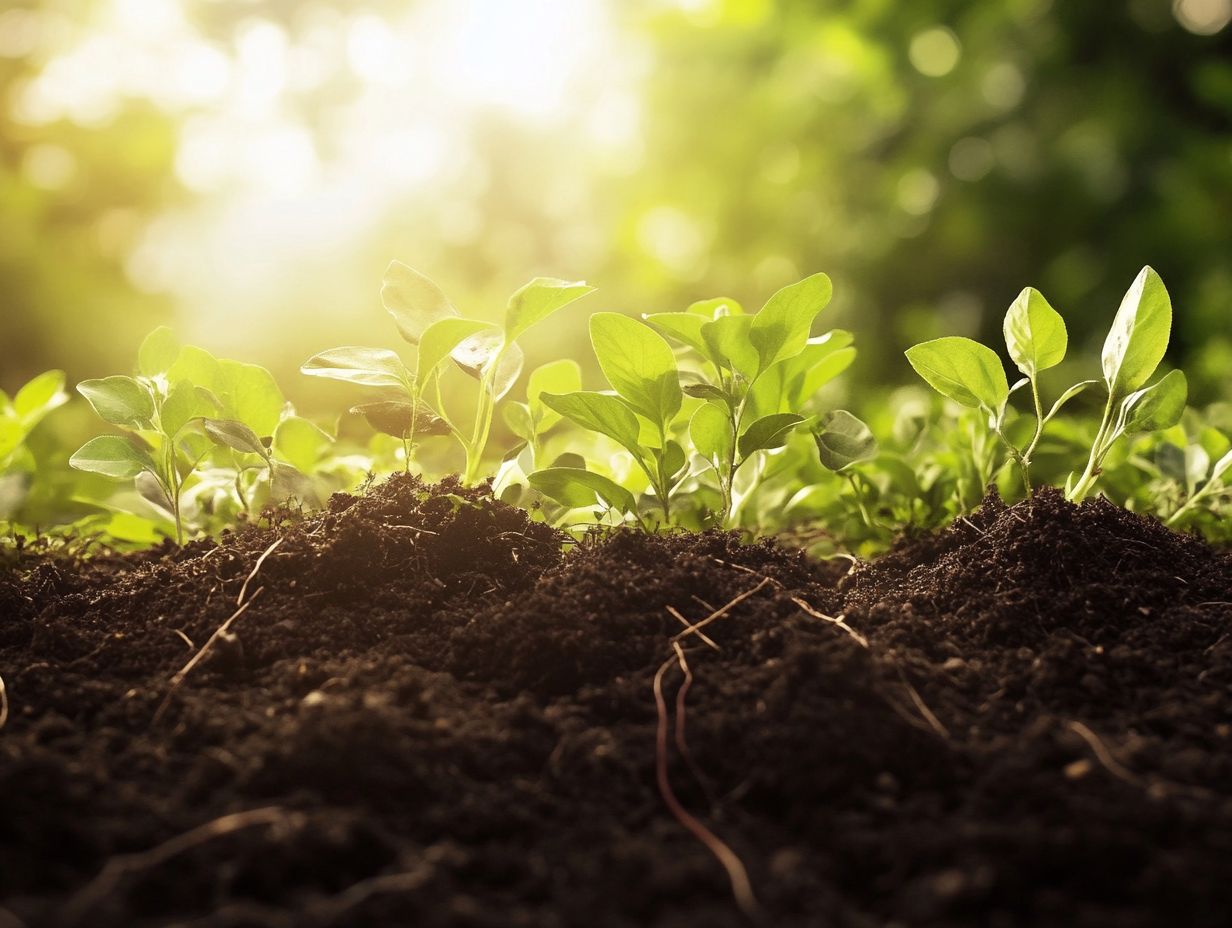
- Soil is a crucial factor in plant health, providing nutrients and support for growth.
- Unhealthy soil can negatively affect plants, including stunted growth and reduced yield.
- Regular soil testing and implementing sustainable management practices can improve and prevent soil degradation, promoting healthier plants.
The Importance of Soil in Plant Health
Soil is a cornerstone of the ecosystem. It plays an essential role in the health of plants.
Soil acts as a reservoir for water, nutrients, and organic matter. These elements are crucial for robust plant growth and sustainability.
Healthy soil cultivates a diverse microbiome. This supports plant health and the broader ecosystem.
By fostering biodiversity and managing nutrients with care, farmers can elevate agricultural productivity. They can secure food sources while conserving precious natural resources.
Understanding the relationship between soil and plant health is essential for advancing sustainable agriculture and environmental conservation.
Understanding Soil Composition
Soil composition is a complex blend of minerals, organic matter, water, and air. All of these play a pivotal role in nurturing plant life.
This mixture not only provides the essential physical structure for plants to anchor their roots. It also affects nutrient availability and microbial activity elements that are crucial for robust growth.
Organic matter, such as decomposed leaves and microorganisms, enriches the soil. It enhances its ability to retain moisture and nutrients.
Take loamy soils, for example. Their balanced composition of sand, silt, and clay makes them the gold standard for agriculture. They excel in both drainage and nutrient retention.
In contrast, while sandy soils might lack vital nutrients, they shine in terms of excellent drainage. This makes them suitable for certain drought-resistant crops.
Grasping these interactions enables you to optimize soil health and foster sustainable agricultural practices.
Role of Soil in Nutrient Absorption
The role of soil in nutrient absorption is critical for your plants’ growth. It provides the essential nutrients they need for photosynthesis and overall development.
This process begins with the interaction between soil particles and organic matter, where vital minerals and nutrients become accessible.
As your plants draw these nutrients up through their roots, they depend on a delicate balance within their environment. Healthy ecosystems nurture this balance, fostering beneficial relationships among various organisms.
Microbes play a particularly vital role in nutrient cycling, which is the process of nutrients moving through the ecosystem. They break down organic matter and release nutrients that your plants can easily absorb.
By maintaining soil health, you enhance nutrient availability. You also support a thriving ecosystem essential for sustainable agriculture.
Start nurturing your soil today and watch your plants thrive! Join our community for tips and resources!
Signs of Unhealthy Soil
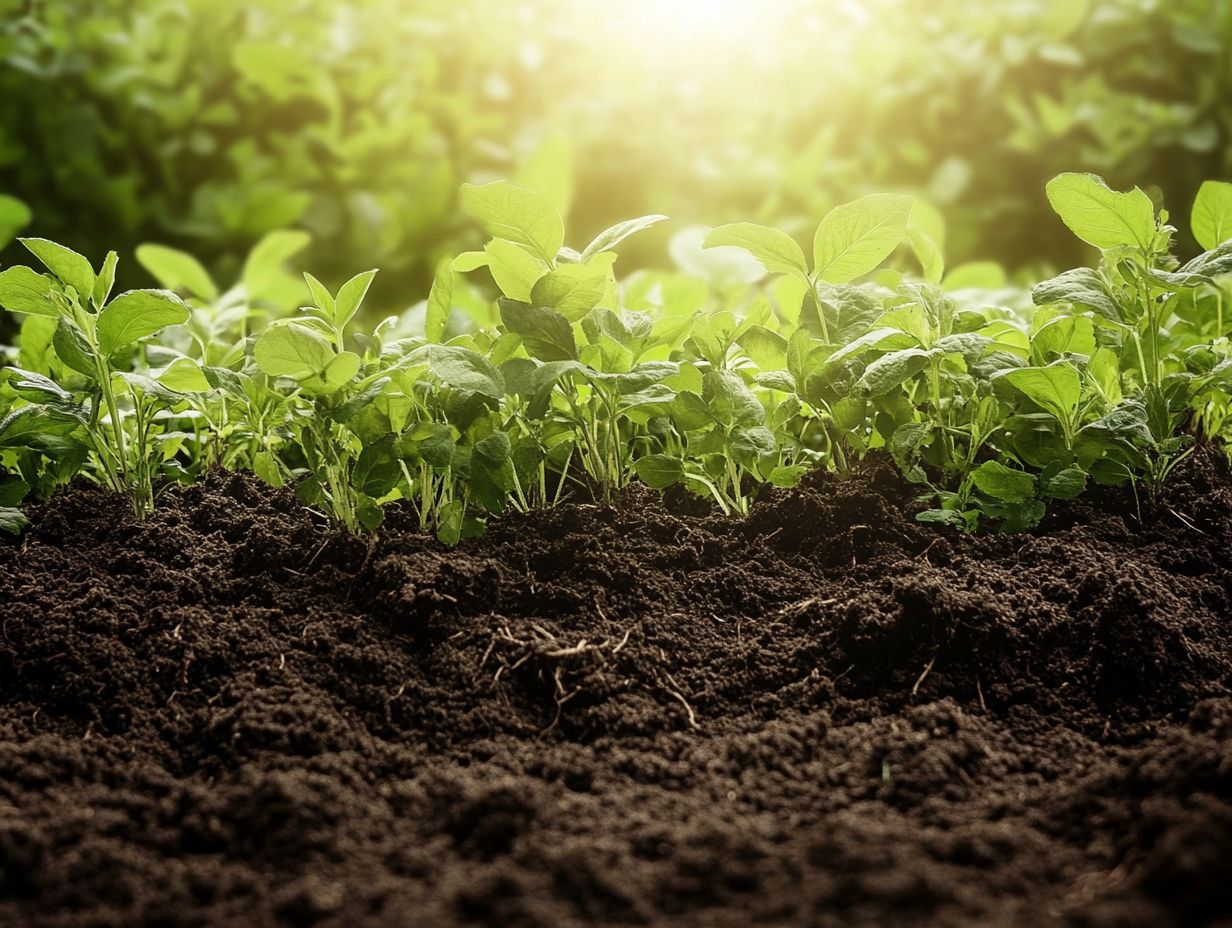
Recognizing signs of unhealthy soil is essential for good plant health. Look out for stunted growth, nutrient deficiencies, and a rise in pests and diseases.
These issues can come from several factors. When soil gets too packed down, erosion occurs, and there’s a decline in organic matter. This diminishes soil biodiversity and harms ecosystem health.
By identifying these indicators, you can take corrective measures to restore soil vitality and boost productivity.
Identifying Common Soil Issues
Identifying common soil issues is your first step toward effective soil management and restoration.
Take soil compaction, for example. It can severely limit root growth by reducing oxygen availability and water infiltration. This can lead to stunted plants, even in otherwise fertile soils.
Nutrient depletion is another common problem, often caused by repetitive cropping without proper replenishment. This leaves plants vulnerable to deficiencies.
Unhealthy soil creates an environment that attracts harmful pests and pathogens, like root rot and aphids. When soil health is compromised, it leads to a series of broader problems, affecting entire ecosystems and agricultural yields.
This highlights the importance of maintaining and enhancing soil vitality for optimal growth and sustainability.
Effects of Unhealthy Soil on Plants
The impact of unhealthy soil on plants is significant. It results in stunted growth, diminished yields, and increased vulnerability to pests and diseases.
When soil fails to provide essential nutrients, plants struggle to thrive, often showing distress signals like yellowing leaves or underdeveloped fruit.
This issue doesn’t just affect individual crops; it can have a ripple effect on agricultural productivity and food security.
Additionally, unhealthy soil creates an environment that attracts harmful pests and pathogens, making it harder for growers and threatening the delicate balance of the ecosystem.
Impact on Growth and Yield
The effects of unhealthy soil on growth and yield are a major concern for anyone looking to optimize production and ensure food security.
When soil lacks essential nutrients or has poor structure, the consequences can be drastic. Research shows that crops grown in nutrient-deficient soil can see growth rate reductions of up to 40%.
For example, in Iowa, farmers who adopted regenerative practices to restore soil vitality reported yield increases of nearly 30% in just a few years. These examples emphasize the importance of maintaining nutrient levels and optimizing soil conditions to maximize agricultural output and secure global food supplies.
Improving Soil Health
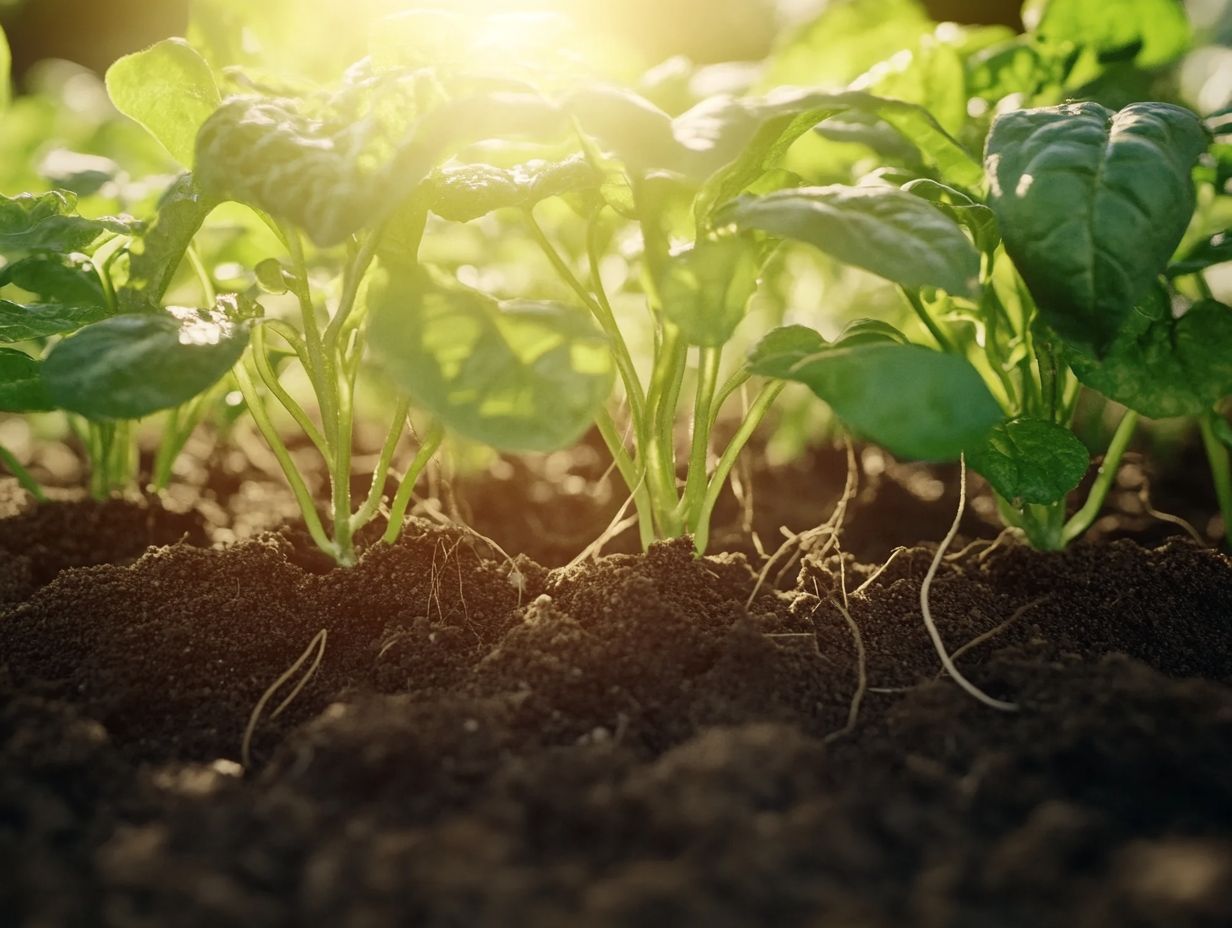
Improving soil health is vital for maintaining agricultural productivity and boosting ecosystem resilience. You can use a range of restoration techniques to achieve this goal.
Practices like adding organic matter, using crop rotation, and reducing chemical inputs play a significant role in revitalizing soil ecosystems.
By prioritizing soil management, you can replenish vital nutrients and improve soil structure. This leads to healthier plants and enhanced food security.
The following methods offer effective strategies for restoring soil health and establishing sustainable agricultural systems.
Methods for Soil Restoration
Methods for soil restoration encompass practices that enhance organic matter content, improve nutrient movement, and promote biodiversity within the soil ecosystem.
By integrating organic matter, such as compost or green manure, into your soil, you’ll improve its structure, leading to enhanced water retention and aeration. Utilizing cover crops is another effective approach; they prevent erosion, reduce weed pressure, and create a welcoming environment for beneficial microorganisms, which are tiny living things that help soil health. Crop rotation also plays a crucial role, disrupting pest cycles and optimizing nutrient use by varying plant families across seasons.
Together, these practices not only contribute to sustainable soil management but also cultivate healthier ecosystems, bolstering resilience against climate change and promoting agricultural productivity.
Preventing Soil Degradation
You can protect your soil and ensure its health for the future! Preventing soil degradation is essential for preserving soil health and ensuring the long-term sustainability of agricultural practices. By embracing effective soil management strategies that prioritize conservation and biodiversity, you can protect soil resources from erosion, compaction, and loss of nutrients.
Adopting sustainable practices like reduced tillage, organic farming, and implementing cover crops allows you to enhance soil structure and cultivate a thriving ecosystem that supports both plants and animals. This proactive approach conserves natural resources and secures food production for generations to come.
Best Practices for Sustainable Soil Management
Implementing best practices for sustainable soil management is crucial for restoring and maintaining soil health while enhancing biodiversity in agricultural systems.
As you strive for sustainability, you ll find significant advantages in strategies like crop rotation. This technique not only disrupts pest cycles but also enriches the nutrients in your soil. Incorporating organic amendments, such as compost or cover crops, can further elevate microbial activity and improve soil structure.
Another effective approach is conservation tillage, which minimizes soil disturbance, protecting water moisture and preserving the intricate ecosystem within the soil. The Natural Resources Conservation Service is an invaluable ally, offering essential guidance and resources to ensure you have the support you need for effective management of these sustainable practices.
Frequently Asked Questions
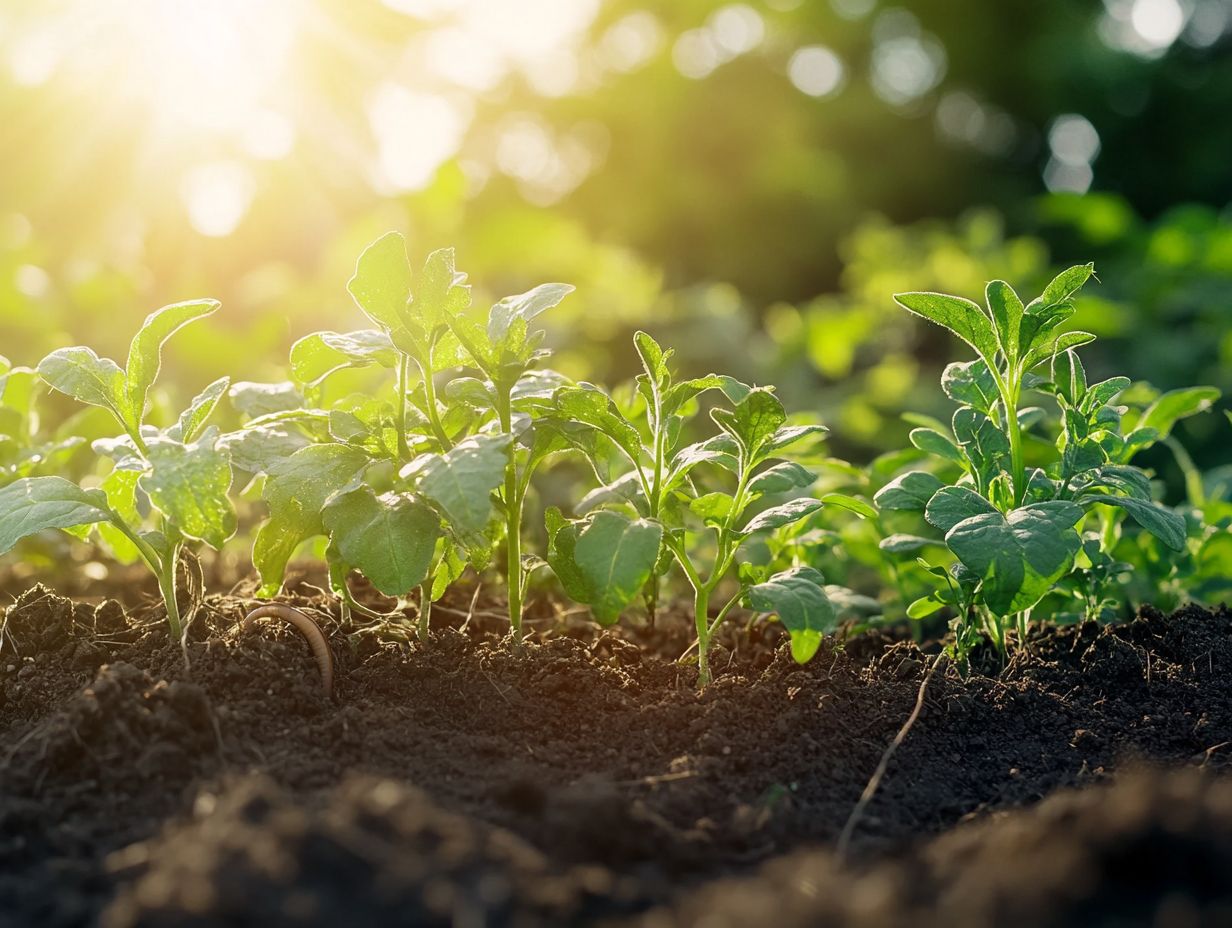
1. What is the connection between soil and plant health?
The soil provides essential nutrients and support for plants to grow, making it a crucial factor in maintaining plant health, particularly in understanding the connection between water and soil health.
2. How does soil quality affect plant health?
Soil quality directly impacts plant health by determining the availability of nutrients, water retention, and physical structure for root growth and development, highlighting the importance of water in soil health.
3. Can poor soil quality lead to plant diseases?
Yes, poor soil quality can create an imbalance of nutrients and microorganisms, making plants more susceptible to diseases.
4. How does the type of soil affect different plants?
The type of soil can greatly impact the types of plants that can thrive in a specific area. For example, acidic soil may be more suitable for certain plants while others may prefer alkaline soil.
5. What are some signs of unhealthy soil that can affect plant health?
Signs of unhealthy soil can include compacted soil, poor drainage, lack of organic matter, and an imbalance of nutrients. These conditions can lead to stunted growth, wilting, and yellowing of leaves in plants.
6. How can I improve the connection between soil and plant health?
Improving soil health can be achieved through regular testing and adding amendments such as compost and organic fertilizers. Practicing proper crop rotation and avoiding over-fertilization can help maintain a healthy balance in the soil for plant growth, benefiting both farmers and the environment.
Consider testing your soil today and trying out these practices to promote a healthier ecosystem!

